You will need:
- Different coloured food dyes e.g. red, yellow, green and blue
- Flowering plants with white petals e.g. Carnations
- Scissors
- Running water
- Four cups of water. (you may want to use a glass jar as it will be heavier and less likely to tip over).
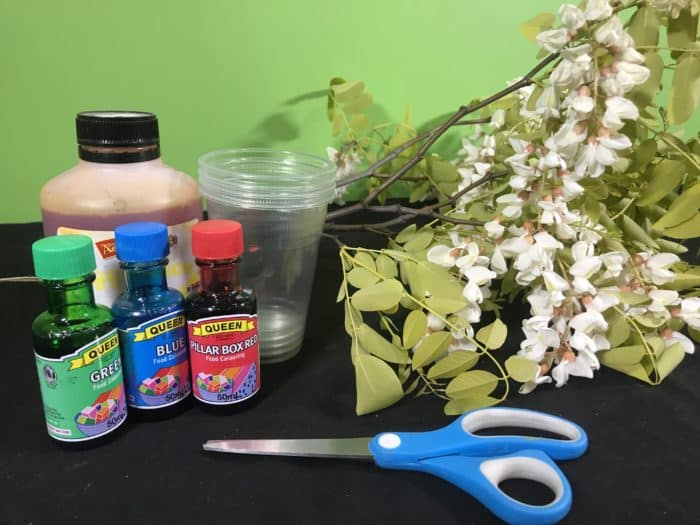

Go further – buy 5 x student activity sheets as extension worksheets.
This student science booklet has been created by experienced science educators from the Fizzics Education team.
Use these student worksheets as blackline masters for your science class!
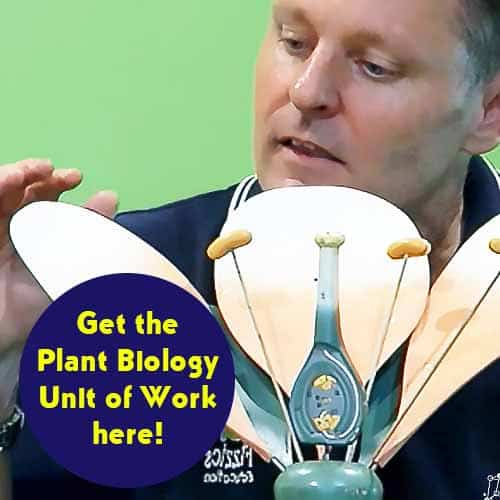
Get the Unit of Work on Plant Biology here!
- Learn about the parts of a flower
- Discover how vascular tissue transports water & sugars around the plant
- Learn about plant pigments and adaptations to the environment
- From photosynthesis to transpiration & more, there’s a heap covered!
Includes cross-curricular teaching ideas, student quizzes, a sample marking rubric, scope & sequences & more
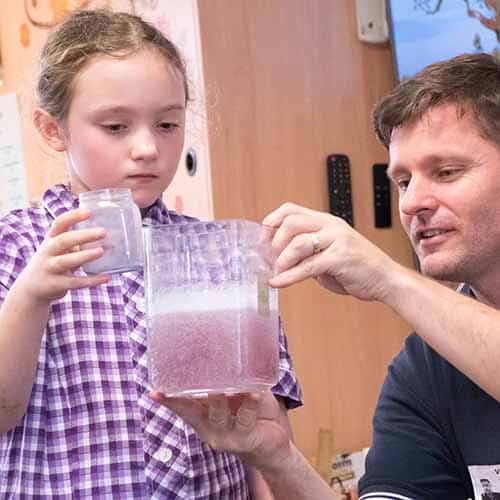
School science visits since 2004!
– Curriculum-linked & award-winning incursions.
– Over 40 primary & high school programs to choose from.
– Designed by experienced educators.
– Over 2 million students reached.
– Face to face incursions & online programs available.
– Early learning centre visits too!
Why Does This Happen
When leaves and petals lose water to the air, the water must be replaced. Eventually, the coloured liquid must be pulled through the stems to replace the lost water being lost, colouring the leaf tips and flower petals. This process is ‘transpiration’.
To transport liquid through the place, plant stems have bundles of tubes inside them called ‘vascular bundles’. Vascular bundles that carry water from the roots to the leaves are called xylem. It was those vascular bundles that were transporting the coloured water up the flower stem. Try splitting the stem in the middle and placing the ‘two stems’ in different coloured solutions.
Variables to test
- Vary the temperature of the dyes
- Compare different flowers in the same dye
- Try this on hot vs cold days
- Can you make a flower with two colours or more?
Classroom activity sheets for this experiment
Create, reflect & extend!
From basic ecology and digital microscopy to plants for life, we’ve got your living things unit covered!
Get in touch with FizzicsEd to find out how we can work with your class.
Plants for Life
Years K to 6
Maximum 30 students
Workshop (NSW & VIC)
60 or 90 minutes
Online Class Available
STEM Full Day Accelerator - Primary
Designed from real classroom experiences, this modular day helps you create consistently effective science learning that directly address the new curriculum with easily accessible and cost-effective materials.

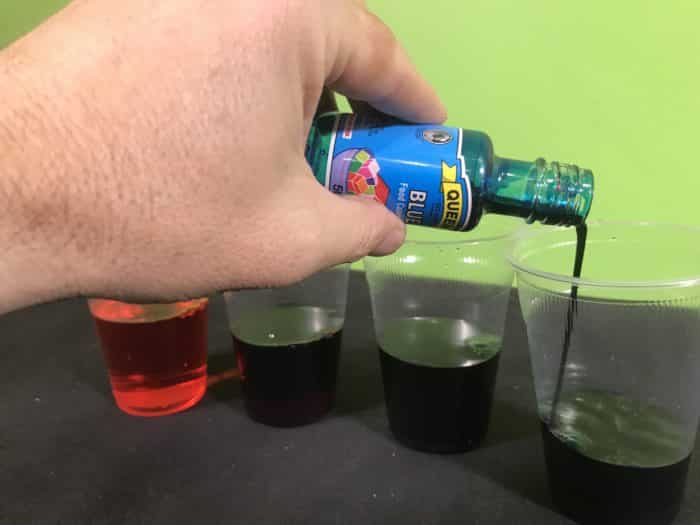
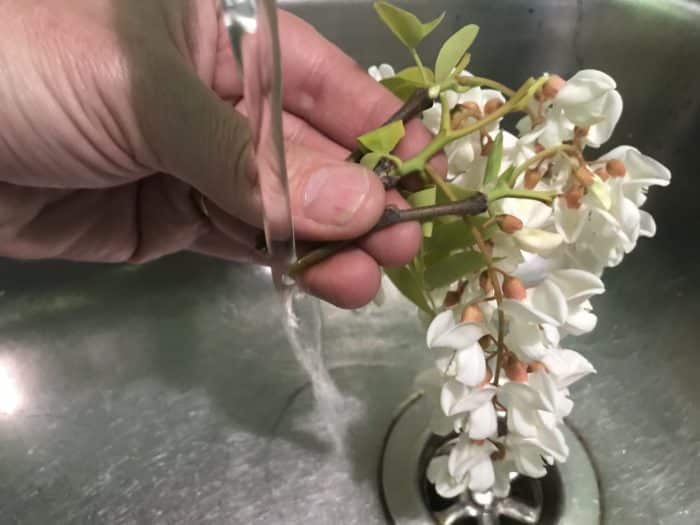
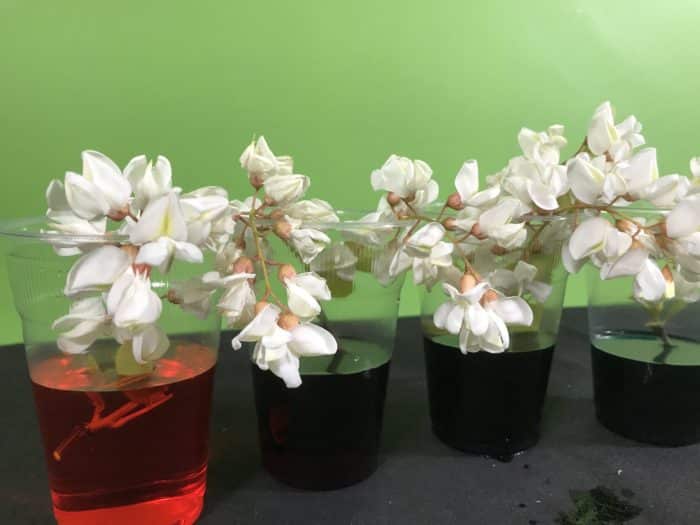
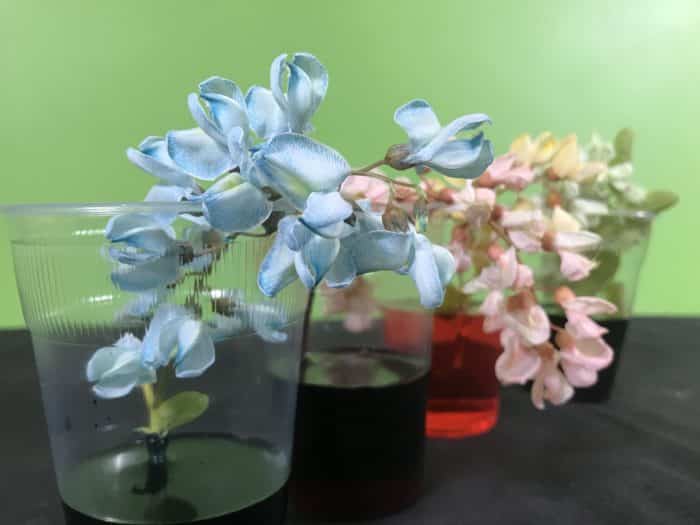
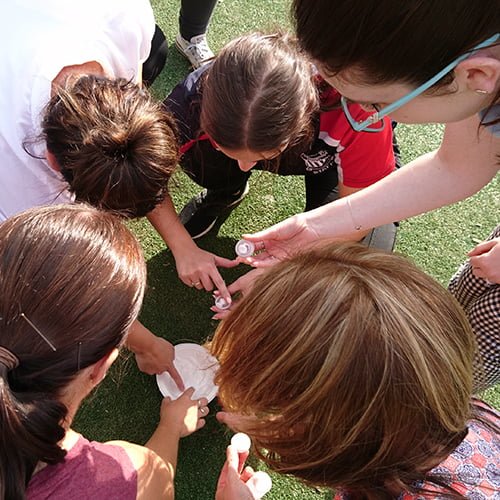


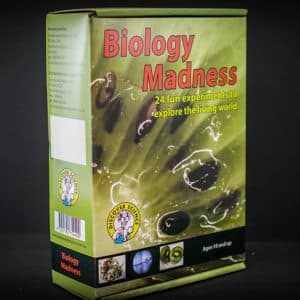
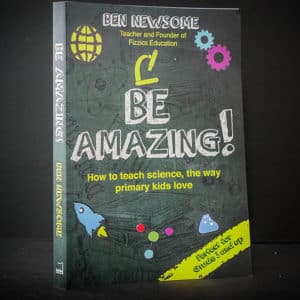























Comments